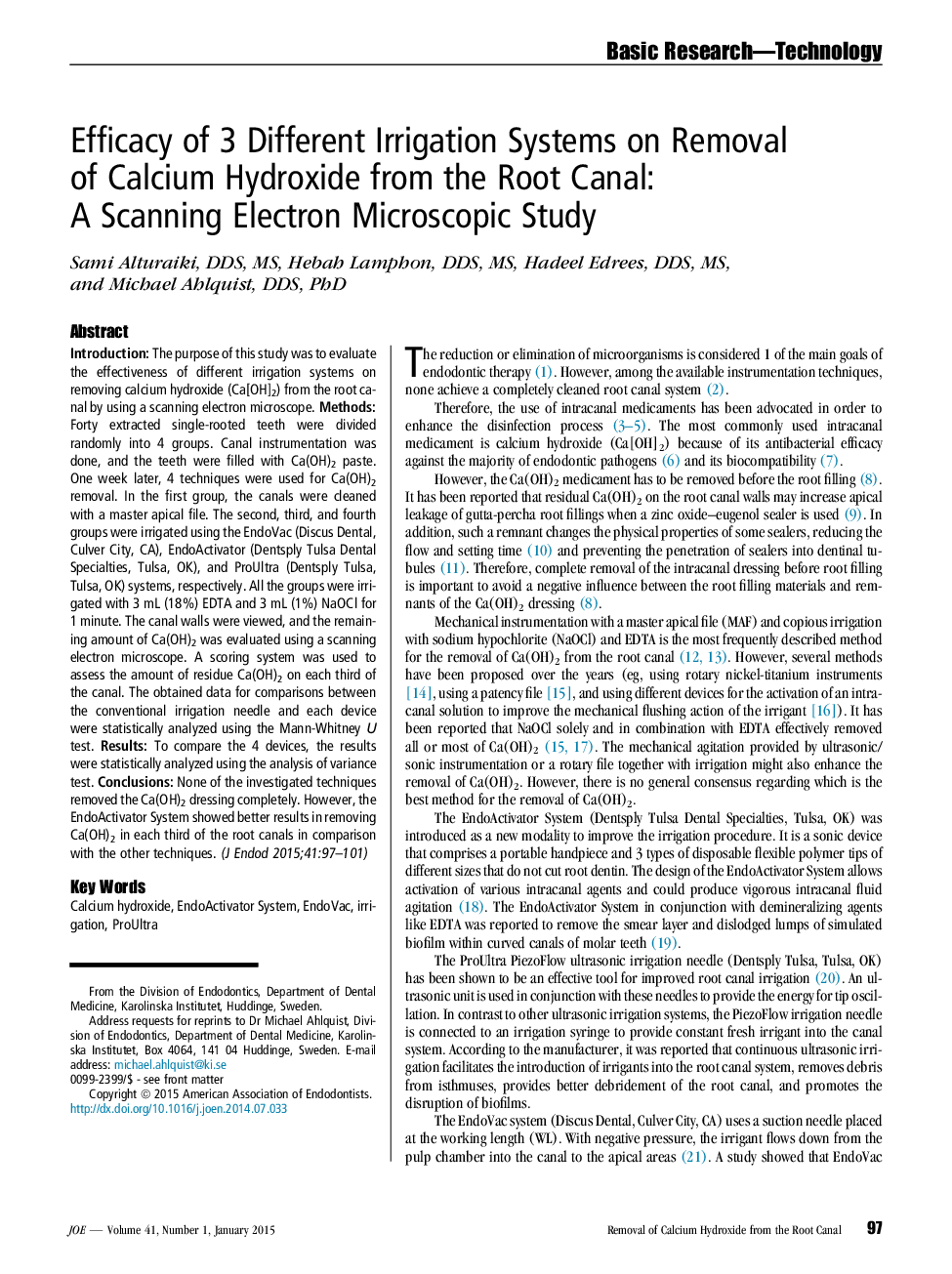| Article ID | Journal | Published Year | Pages | File Type |
|---|---|---|---|---|
| 3150332 | Journal of Endodontics | 2015 | 5 Pages |
IntroductionThe purpose of this study was to evaluate the effectiveness of different irrigation systems on removing calcium hydroxide (Ca[OH]2) from the root canal by using a scanning electron microscope.MethodsForty extracted single-rooted teeth were divided randomly into 4 groups. Canal instrumentation was done, and the teeth were filled with Ca(OH)2 paste. One week later, 4 techniques were used for Ca(OH)2 removal. In the first group, the canals were cleaned with a master apical file. The second, third, and fourth groups were irrigated using the EndoVac (Discus Dental, Culver City, CA), EndoActivator (Dentsply Tulsa Dental Specialties, Tulsa, OK), and ProUltra (Dentsply Tulsa, Tulsa, OK) systems, respectively. All the groups were irrigated with 3 mL (18%) EDTA and 3 mL (1%) NaOCl for 1 minute. The canal walls were viewed, and the remaining amount of Ca(OH)2 was evaluated using a scanning electron microscope. A scoring system was used to assess the amount of residue Ca(OH)2 on each third of the canal. The obtained data for comparisons between the conventional irrigation needle and each device were statistically analyzed using the Mann-Whitney U test.ResultsTo compare the 4 devices, the results were statistically analyzed using the analysis of variance test.ConclusionsNone of the investigated techniques removed the Ca(OH)2 dressing completely. However, the EndoActivator System showed better results in removing Ca(OH)2 in each third of the root canals in comparison with the other techniques.
